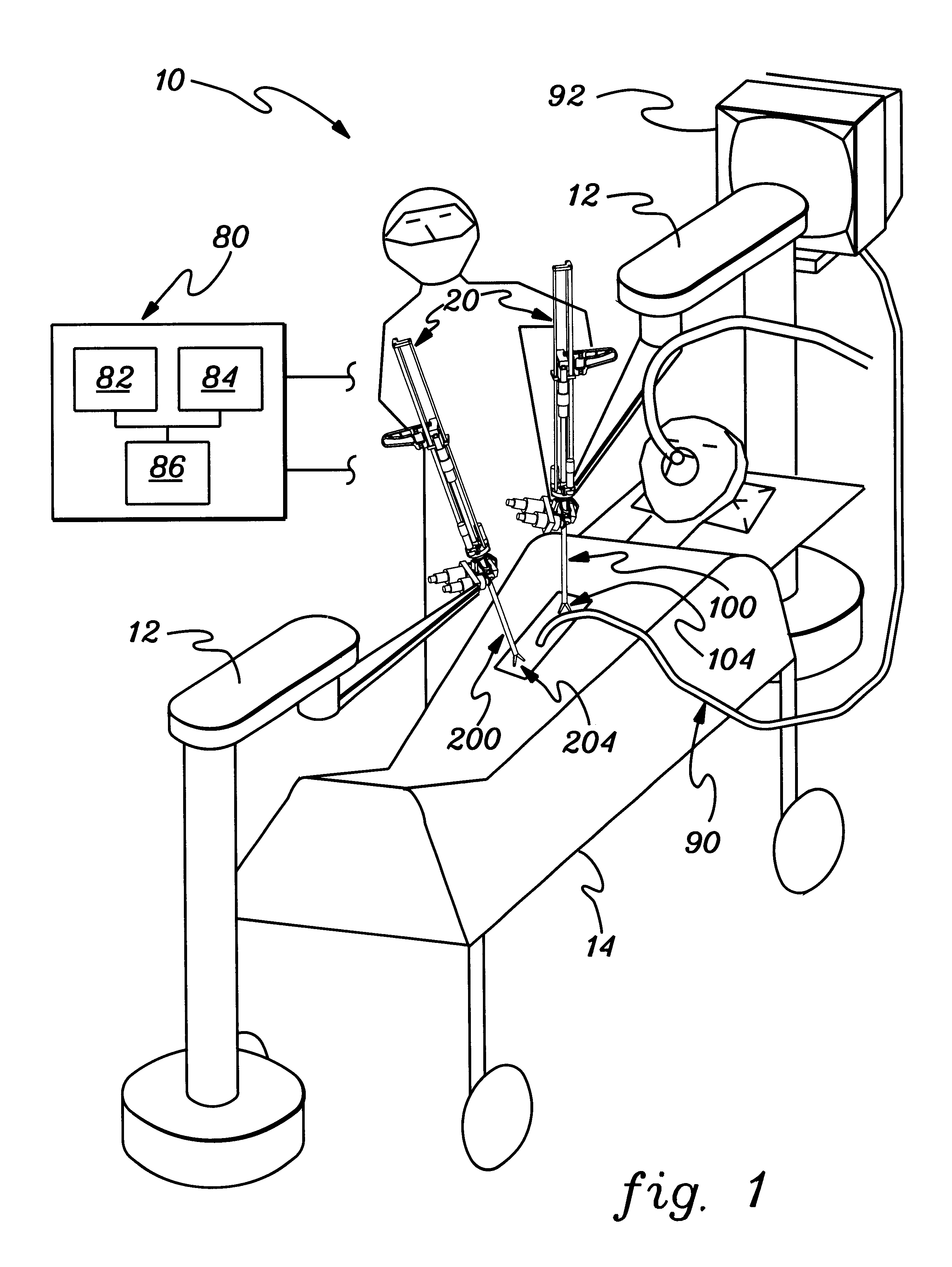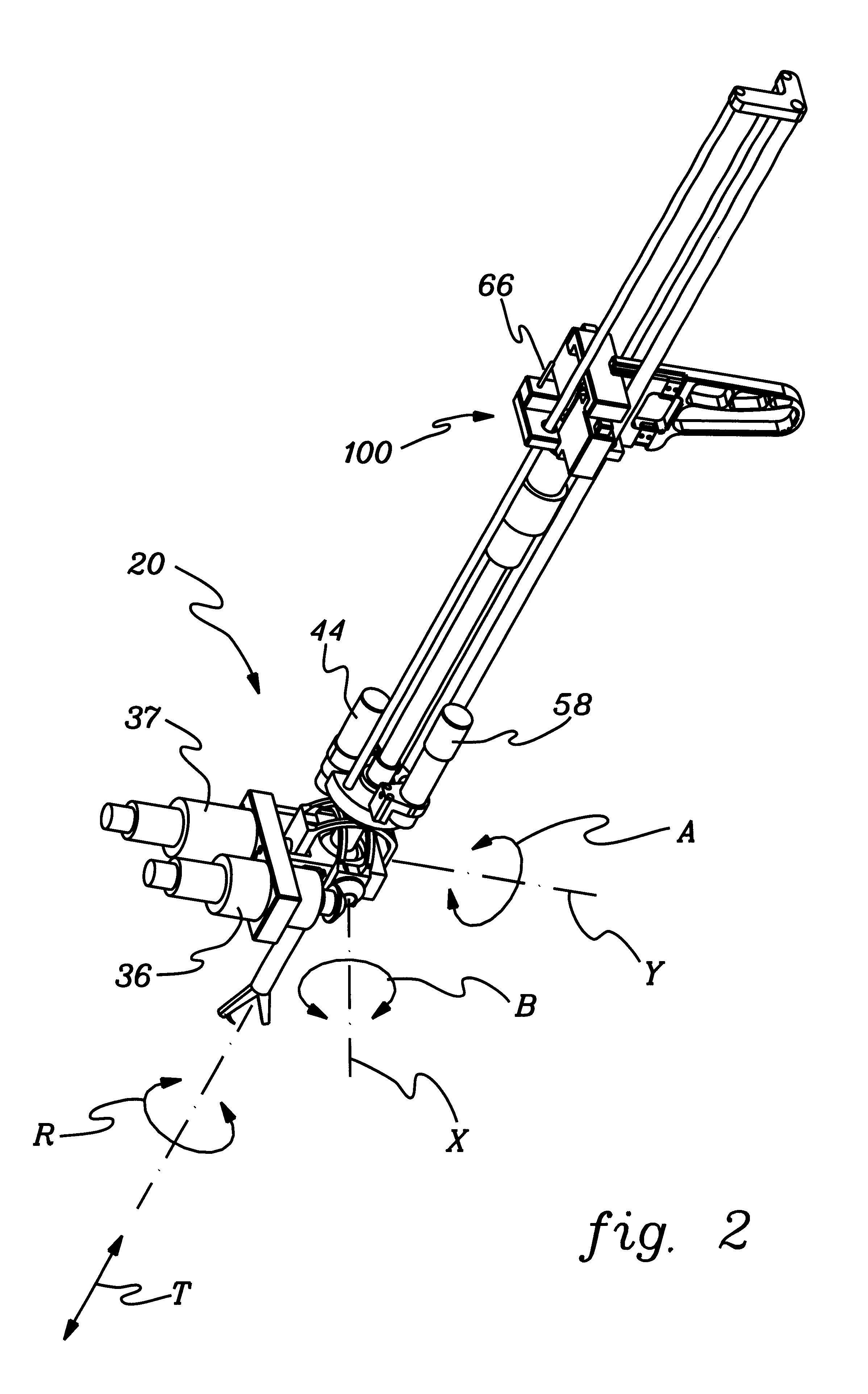Robotic system, docking station, and surgical tool for collaborative control in minimally invasive surgery
a robotic system and surgical tool technology, applied in the direction of electric programme control, program control, instruments, etc., can solve the problems of high dexterity, increased pain and delayed recovery of patients, and large variability even among trained surgeons
- Summary
- Abstract
- Description
- Claims
- Application Information
AI Technical Summary
Problems solved by technology
Method used
Image
Examples
Embodiment Construction
FIG. 1 illustrates one embodiment of a system 10 according to the present invention for minimally invasive surgery such as laparoscopic surgery. In this exemplary embodiment, system 10includes two docking stations 20, each of which is supported by a stand 12. One of docking stations 20is releasably attached to a suturing surgical tool 100and the other docking station 20 is releasably attached to a gripping surgical tool 200. Docking stations 20 and surgical tools 100 and 200 are operatively connected a controller 80, e. g., a microprocessor or a computer, for autonomous control by controller 80 or collaborative control manually by surgeon and actively by controller 80 as explained in greater detail below.
In this illustrated embodiment, a patient is typically positioned on an operating table 14. For laparoscopic surgery, surgical tools 100 and 200 are inserted into respective incisions in the abdomen of the patient. An endoscope 90 may also be inserted into the patient through a thir...
PUM
 Login to View More
Login to View More Abstract
Description
Claims
Application Information
 Login to View More
Login to View More - R&D
- Intellectual Property
- Life Sciences
- Materials
- Tech Scout
- Unparalleled Data Quality
- Higher Quality Content
- 60% Fewer Hallucinations
Browse by: Latest US Patents, China's latest patents, Technical Efficacy Thesaurus, Application Domain, Technology Topic, Popular Technical Reports.
© 2025 PatSnap. All rights reserved.Legal|Privacy policy|Modern Slavery Act Transparency Statement|Sitemap|About US| Contact US: help@patsnap.com



